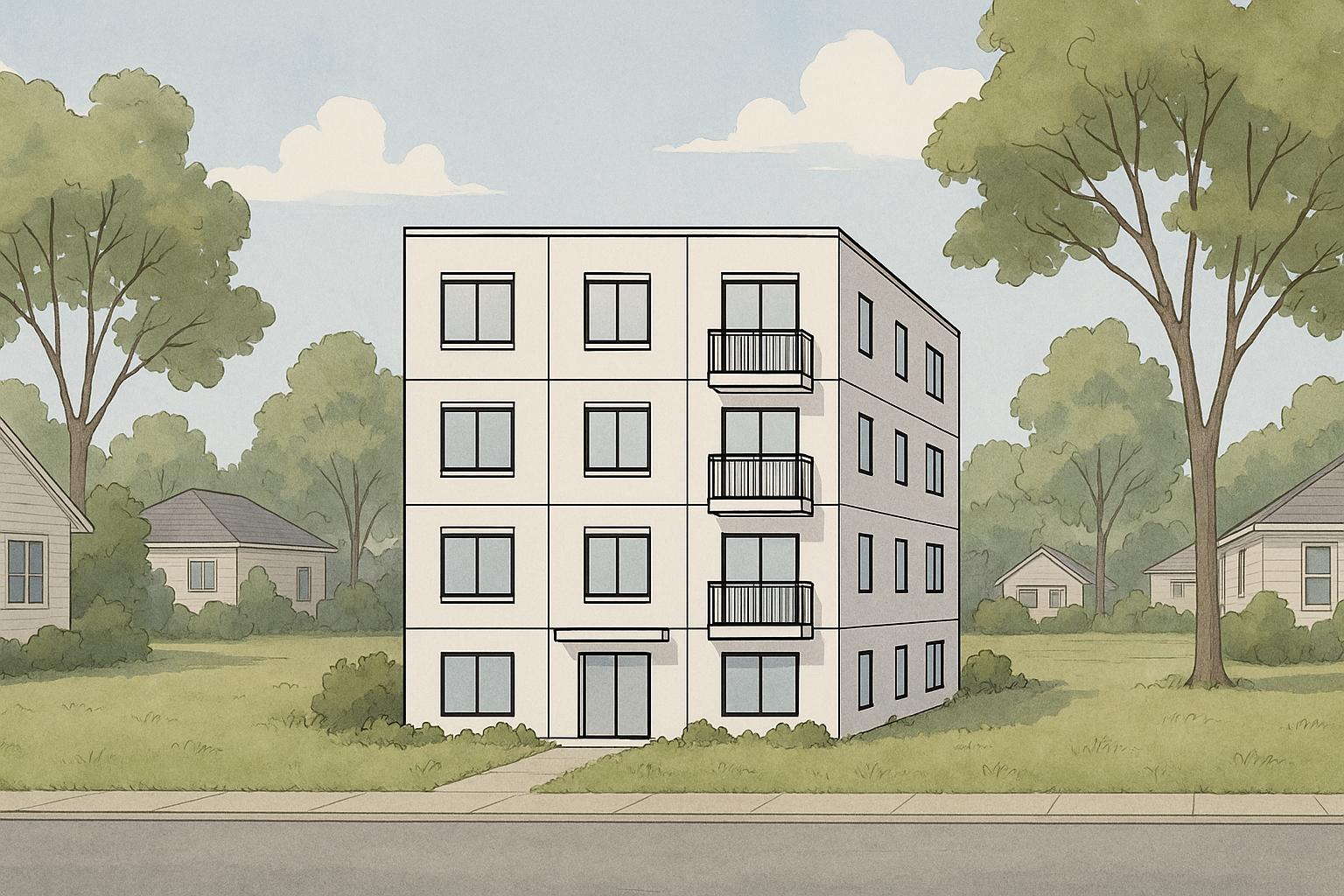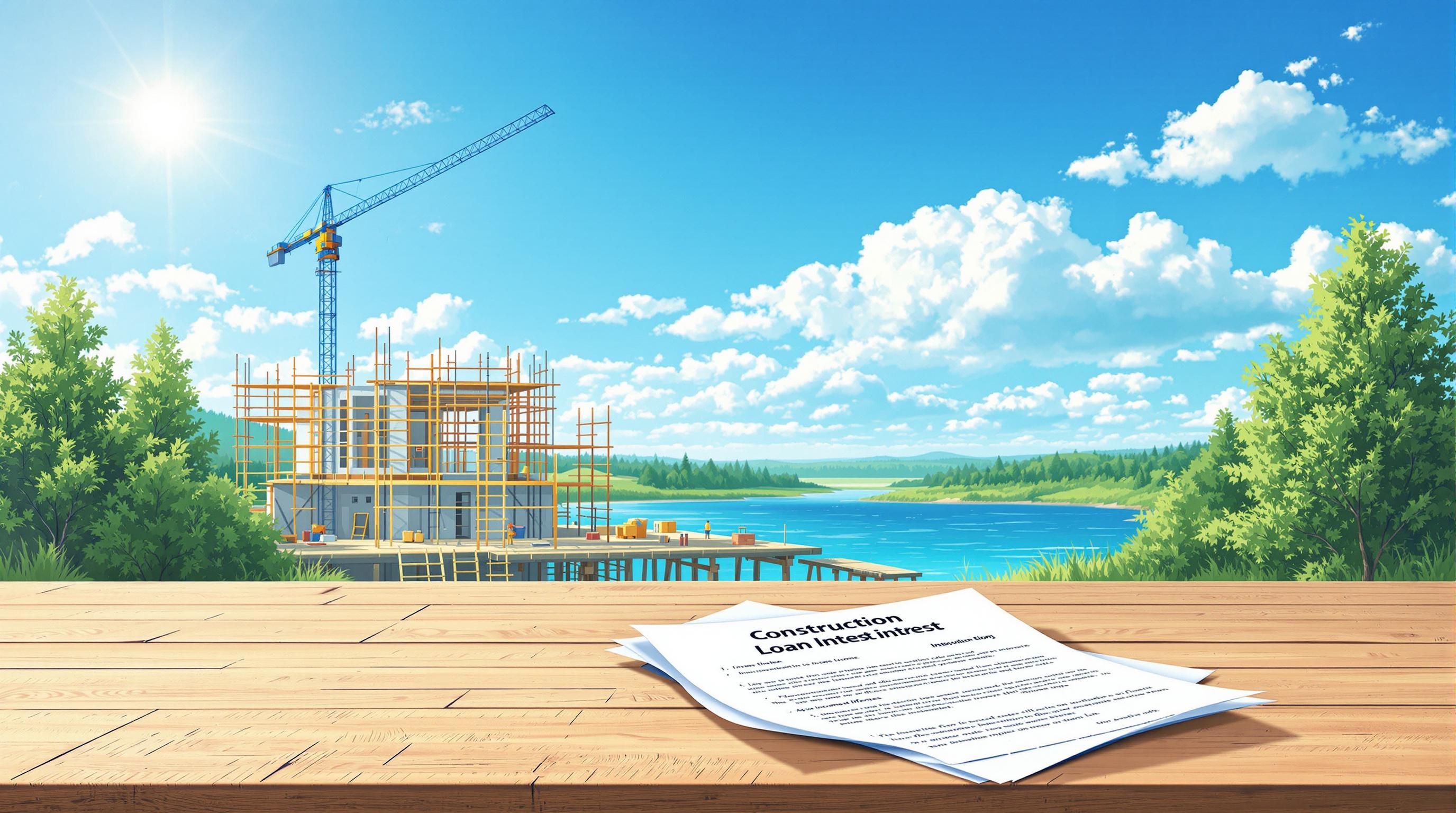Building a custom home in Nova Scotia takes about 5 to 7 months once construction begins. Here’s a quick breakdown of the timeline:
- Planning and permits: ~2 months
- Site preparation and foundation: 4–6 weeks
- Framing and exterior shell: 4–8 weeks
- Interior systems and finishes: 8–10 weeks
- Final inspections and move-in preparations: 2–3 weeks
Key tips:
- Spring and summer are the best seasons to build, avoiding weather delays.
- Fixed-price contracts (starting at $168/ft²) help control costs.
- Early decisions on materials and finishes prevent delays.
Weather impact: Winter construction faces challenges like ground frost and shorter daylight hours, but proper planning can mitigate these issues.
To stay on schedule, work with experienced builders, finalize design choices early, and plan for potential weather disruptions.
30 Years of Custom Home Building: Secrets from a Nova ...
Planning and Permits (Months 0-2)
The planning and permitting phase is where your custom home build in Nova Scotia begins. This phase usually takes 1–2 months and involves finalizing your design, creating a budget, and obtaining the required approvals.
House Design and Budget
Using pre-designed floor plans can simplify the process and ensure your plans meet Nova Scotia's building codes. Fixed-price contracts are a great way to avoid surprise costs, with custom home rates in the province starting at $168 per square foot [1]. A well-prepared budget and design plan can make the permit process much smoother.
Required Permits
Once your design and budget are set, the next step is obtaining permits. Common permits include building, electrical, plumbing, and development permits to ensure zoning and land use compliance.
To get these permits, you'll need to submit complete documentation, such as detailed site plans and accurate construction drawings. It's also essential to check zoning requirements and account for municipal review times. Builders with experience in the area can help navigate the local regulations efficiently.
Here are some recent examples of successful permit planning:
- A duplex project in Colchester obtained all required permits quickly, allowing construction to stay on schedule.
- A 4-plex development moved smoothly through the permit process thanks to thorough lot evaluation and zoning checks before construction began.
Building Timeline (Months 3-7)
After the planning and permitting stages, construction begins with a carefully organized process. Building a custom home in Nova Scotia typically takes around 5 to 7 months, with each phase structured for maximum efficiency. Here's a closer look at the key stages.
Site Work and Foundation (4-6 Weeks)
This phase starts with preparing the land and laying the groundwork. Key tasks include:
- Clearing the site, grading, and excavating to ensure proper drainage
- Pouring footings and building foundation walls
- Installing drainage systems and waterproofing
- Setting up utility connections
- Passing necessary municipal inspections
Frame and Shell (4-8 Weeks)
The structural framework comes next, with modern scheduling techniques helping keep things on track. This stage involves:
- Building walls, floors, and roof structures
- Installing windows and exterior doors
- Adding roof shingles and weatherproofing the exterior
- Beginning rough-in work for mechanical systems
Once the exterior is secure, attention shifts to the home's internal systems.
Systems Installation
This phase focuses on the essential systems that make the home functional. Tasks include:
- Installing electrical wiring and panels
- Completing plumbing rough-ins
- Setting up HVAC ductwork and equipment
- Adding insulation and vapour barriers
Pre-ordering critical components can help avoid delays caused by shipping issues [1].
Interior Work
Interior finishing is where the home starts to take shape. It includes:
- Installing drywall, cabinetry, flooring, and fixtures
- Painting and other finishing touches
A well-coordinated 4-plex project in Nova Scotia demonstrated that pre-booking units and properly sequencing tasks can keep interior work moving efficiently [1]. Seasonal weather in Nova Scotia can still impact progress during this phase.
Final Steps
The last stage wraps up the project with the following tasks:
- Completing municipal inspections
- Installing appliances
- Finalizing exterior details
- Performing a thorough cleaning
- Securing the occupancy permit
Clients can monitor the progress of inspections and the occupancy permit through a dedicated app [1].
sbb-itb-16b8a48
Weather Impact on Construction
Nova Scotia's weather plays a big role in construction timelines. Knowing how the climate affects different phases can help you plan smarter and avoid unnecessary delays.
Building in Winter
Winter construction in Nova Scotia comes with its own set of challenges that can slow things down. Here are a few key factors to consider:
- Ground frost: When temperatures drop below freezing, foundation work gets trickier. You may need heating equipment, and concrete curing can take longer.
- Snow clearing: Regular site maintenance is necessary to deal with snow build-up.
- Shorter daylight hours: Reduced daylight limits how long crews can work each day.
- Temperature-sensitive materials: Some materials need specific temperature ranges for proper installation.
Tackling winter projects requires detailed planning and tailored approaches to keep things moving. On the other hand, milder seasons make it easier to stay on schedule.
Best Times to Build
Spring and summer are generally the best seasons for construction in Nova Scotia, especially for critical stages of a project.
Spring Benefits:
- Thawed ground simplifies foundation work.
- Moderate temperatures help concrete cure properly.
- Longer daylight hours mean more time for work.
- Fewer weather-related disruptions.
Summer Advantages:
- Stable and predictable weather.
- Ideal temperatures for installing various materials.
- Maximum daylight for extended workdays.
- Faster drying times for finishes.
"Fixed‑price at $168/ft² - here's exactly how we pull it off. • Risk Clause – Contract says any price spike is ours to eat, never yours. • 80% of labour in‑house → no stacked mark‑ups • Bulk Purchasing Power – Same windows, joists, HVAC kits ordered in pallet lots, months in advance."
– Helio Urban Development [1]
Being aware of these weather factors can help you stay on track and avoid costly delays in your construction projects.
Common Construction Delays
Planning a home build in Nova Scotia? It's essential to understand potential delays that could disrupt your timeline. Every phase of construction comes with its own challenges, and knowing what to expect can help you stay on track.
Selection Deadlines
Timely decisions about finishes and materials are critical for keeping your project on schedule. Delayed choices or last-minute changes can trigger a domino effect of setbacks:
- Interior finishes must be chosen well in advance of installation.
- Custom items need early decisions to allow for manufacturing time.
- Change orders can disrupt multiple trades' schedules.
Work with your builder to establish a clear timeline for selections. Finalizing these decisions early ensures trades can stay coordinated and avoid unnecessary delays. Now, let’s look at how material availability plays a role in your timeline.
Material Lead Times
Having materials ready when needed is key to avoiding delays. Some effective ways to manage this include:
- Ordering standard materials in bulk.
- Pre-storing essential components to avoid last-minute shortages.
- Locking in fixed-price contracts to secure supply and budget.
"Standard Spec Inventory – Critical parts pre-stored; nothing stalls waiting on a shipment." - Helio [1]
Weather Delays
Weather is one factor you can’t control, but it can significantly impact your project’s progress.
During site work:
- Heavy rain can halt excavation.
- Wet conditions delay concrete pouring.
- High winds can make crane use unsafe.
During finishing stages:
- Humidity can interfere with paint and flooring.
- Temperature swings affect exterior finishes.
- Storms can pause outdoor tasks.
To minimize weather-related disruptions, include buffer time in your schedule and plan temperature-sensitive tasks for the right seasons. Experienced builders know how to navigate these challenges effectively.
Next Steps
Now that you've got a clear picture of each phase in building your custom home, it’s time to move forward. Start with a free consultation to review your lot, zoning requirements, and budget. With our fixed-price approach, you’ll have clear budget expectations right from the start.
Here’s what you’ll receive:
- A 72-page master playbook: Covers everything from choosing land to passing final inspections.
- Real-time progress tracking: Stay updated with our live tracking app.
- Weekly photo updates: See your construction progress in detail.
- A dedicated project lead: Ensures smooth communication throughout.
This level of support keeps your project organized from initial planning to move-in day.
Two recent projects highlight our dedication to quality and efficiency. In Halifax, we completed a custom home for $184/sq.ft within 10 months. Over in Colchester, a duplex was built for $165/sq.ft and appraised at $830,000 upon completion [1].
With these tools and proven results, you’re ready to kick off your custom home journey.
Getting Started Today
Reach out to us at (707) 5183 or send an email to lloyd@heliourbandevelopment.com to book your first consultation. Share basic details about your lot and your vision for the home, and our team will help assess feasibility and create a detailed project timeline tailored to your needs.
FAQs
What challenges can arise when building a home during the winter in Nova Scotia, and how can they be managed?
Building a home during the winter in Nova Scotia can present unique challenges due to cold temperatures, frost, and snow. These conditions can slow down tasks like concrete curing, site preparation, and landscaping. Additionally, icy or snowy weather may make it harder to access the site or delay certain trades.
To manage these issues, experienced builders plan ahead by scheduling weather-sensitive tasks for milder periods and using techniques like heated enclosures for concrete work. Advanced planning is also essential to secure trades and materials during the busy building season, helping to keep projects on track despite seasonal challenges.
What can I do to ensure my custom home project in Nova Scotia stays on schedule and within budget?
To keep your custom home project on track and within budget, consider these key strategies:
- Choose a fixed-price contract to avoid unexpected costs. This ensures the builder absorbs any overages beyond the agreed estimate.
- Work with a full-service builder that handles design, permits, and construction in-house. This streamlined approach reduces delays and ensures accountability.
- Be proactive and decisive. Finalize design choices early and maintain regular communication to avoid delays caused by last-minute changes or indecision.
By staying organized and partnering with an experienced local builder, you can navigate the process smoothly and achieve your dream home on time and within budget.
What can I do during the planning phase to ensure my custom home construction in Nova Scotia stays on schedule?
To keep your custom home project in Nova Scotia on track, focus on early planning and proactive communication. Finalize your design choices, budget, and material selections as soon as possible to avoid delays later.
Make sure to account for the time needed to secure building permits, as this process can vary depending on local requirements. Collaborating with experienced professionals who understand Nova Scotia’s permitting and approval process can help streamline this step. Staying responsive and informed throughout the planning phase will set the foundation for a smooth construction timeline.



